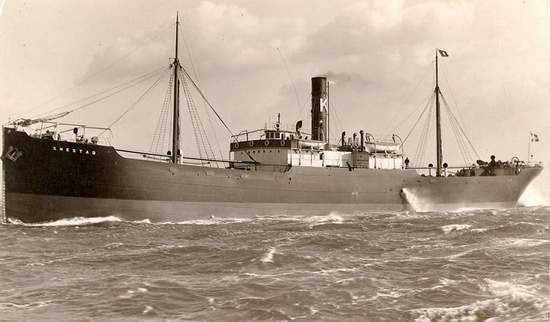Sunday 11 February 1940
 |
| A Finnish soldier ready to go. |
After a month of retraining, reinforcement, bombardment, and probing attacks, the Soviet Army launches a major attack on the Karelian Isthmus to break through the Mannerheim Line. The Soviets have about 460,000 men, over 3,350 artillery pieces, about 3,000 tanks and about 1,300 aircraft deployed on the Karelian Isthmus. In the front line, they dispose of 120,000 men. All told, the Soviets have available about 7 men per yard of the 12-mile front.
Opposing them, the Finns have 150,000 men in total, organized into 8 Divisions. The Finns are deficient in each weapon category by vast margins. Superior mastery of the terrain and weather does little to help them in a brutal frontal assault.
The Soviet barrage opens at 08:40. It can be heard 100 miles away. It lasts until 11:00. Four Soviet artillery regiments fire at the Finns near Summa. The 24th Corps Artillery Regiment alone fires 14,769 shells. The Finns attempt counter-fire, but it is quickly silenced.
At 11:00, the 245th Rifle Regiment of the Soviet 123rd Division, 7th Army, supported by heavy T-28 and light T-26 tanks, attacks the Poppius bunker in the center of the line at Lähde. While the bunker has been destroyed previously, it still constitutes a rallying point for the Finns. The Soviet troops capture the bunker for good at 12:24, using armored cars parked in front of the bunker to block machine-gun fire from the Finns inside. By the end of the day, the Finnish company defending the bunker has just 16 men left out of the 100 with which they started. The 2nd Battalion, 9th Infantry Regiment which defends the sector loses control of the situation. The Soviets, having made their first real breach in force of the entire campaign, dig in for the night, but fighting continues around the Millionaire bunker.
One aspect of the Soviet effort fails completely. They attempt to outflank the Mannerheim Line on the ice of Lake Ladoga. The attempt fails completely.
North of Lake Ladoga, the Finns ambush a Soviet supply convoy of 60 trucks.
Battle of the Atlantic: U-53 (Korvettenkapitän Harald Grosse) torpedoes 8,022-ton British tanker Imperial Transport off Butt of Lewis in the Atlantic. All 51 survive. The ship remains afloat but abandoned for the time being.
At 11:00, U-53 also sinks 4,114 ton Norwegian MV Snestad. Two perish, 34 crew survive - the two who perish do so in the water during the rescue operation. Grosse waits for the crew to abandon ship, then fires a finishing shot torpedo.
U-53 also attacked the Albert L. Ellsworth at the same spot a few hours later. The ship was rescuing the men from the Snestad. Grosse fired a torpedo which detonated prematurely but looked like it had hit. The men of the freighter abandoned it in a great rush. Grosse then fired another torpedo to finish off the freighter, but it also was a dud. A third torpedo ran underneath the ship and exploded beyond. Grosse then thought the ship was finished and left. However, the ship remained afloat, and the survivors re-boarded it the next morning. The ship was completely intact, so they resumed their voyage to Bergen and arrived there safely.
U-9 (Kptlt. Ludwig Mathes) torpedoes and sinks Estonian freighter SS Linda. One crew perishes.
U-50 (Kptlt. Max-Hermann Bauer) torpedoes and sinks Swedish freighter SS Orania. Fourteen crew perish, 10 survivors are picked up by HMS Faulknor after a night in the water.
U-37 (K.Kapt. Werner Hartmann) uses its deck gun to sink British trawler Togimo off Milford Haven. One crew member perishes.
Convoy OG 18F forms at Gibraltar.
German/Soviet Relations: The two nations conclude another trade agreement, whereby the Germans will provide machinery and the Soviets will provide raw goods such as oil, wheat, and cotton.
Canada: Lord Tweedsmuir, the Gouverneur-General, passes away at 64.
China: In the Battle of South Kwangsi, the Japanese 22nd Army force that took Wuning withdraws toward Nanning.
 |
| The Snestad, sunk on 11 February 1940. Photo Courtesy of Library of Contemporary History, Stuttgart. |
February 1940
February 1, 1940: Second Battle of SummaFebruary 2, 1940: Soviet Assaults at Summa February 3, 1940: Soviets Capture a Bunker
February 4, 1940: Peace Talks in Stockholm
February 5, 1940: Allies to Invade Norway
February 6, 1940: Careless Talk Costs Lives
February 7, 1940: IRA Terrorists Executed
February 8, 1940: Spies!
February 9, 1940: The Welles Mission
February 10, 1940: Confiscation of Jewish Goods
February 11, 1940: Soviets Attack Mannerheim Line
February 12, 1940: Breaches In Mannerheim Line
February 13, 1940: Soviets Inching Forward in Finland
February 14, 1940: Soviets Batter Mannerheim Line
February 15, 1940: Finns Retreat
February 16, 1940: Altmark Incident
February 17, 1940: Manstein and Hitler Discuss Fall Gelb
February 18, 1940: Operation Nordmark
February 19, 1940: King Gustav Says No
February 20, 1940: Falkenhorst Commands Weserubung
February 21, 1940: Radar Advances
February 22, 1940: Friendly Fire
February 23, 1940: Soviets Present Their Demands
February 24, 1940: Fall Gelb Revised
February 25, 1940: Mr. Welles Comes to Visit
February 26, 1940: Battle of Honkaniemi
February 27, 1940: Finns Retreat Again
February 28, 1940: Overseas Volunteers Help Finland
February 29, 1940: Finns Accept Soviet Terms In Principle
2019
No comments:
Post a Comment